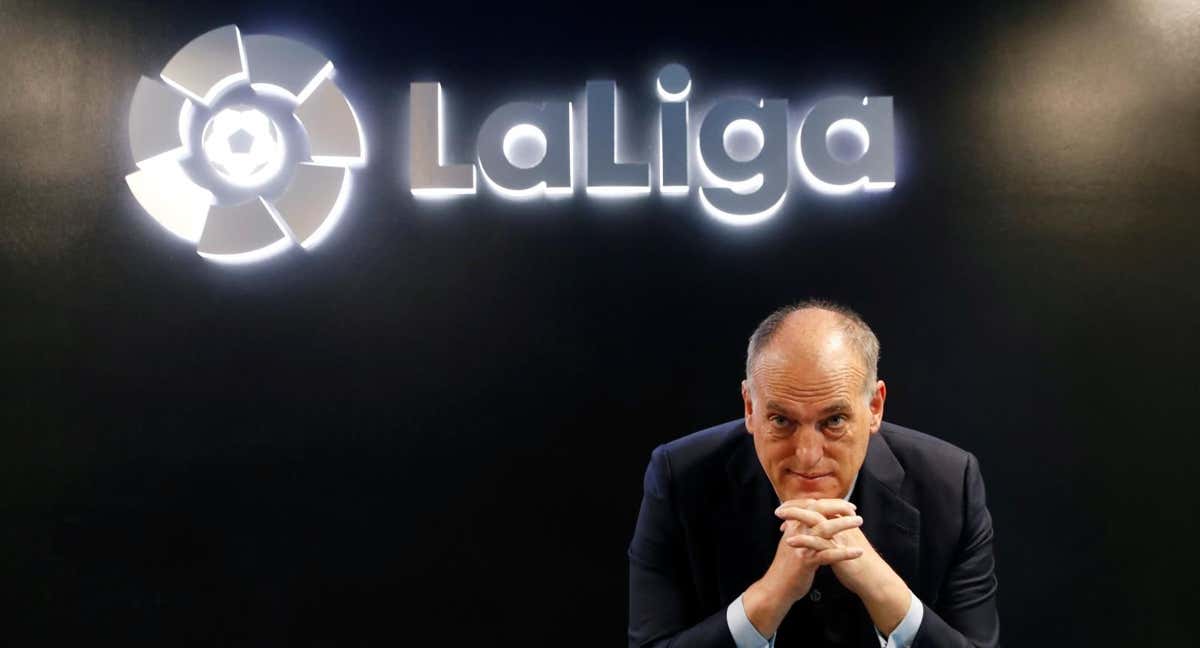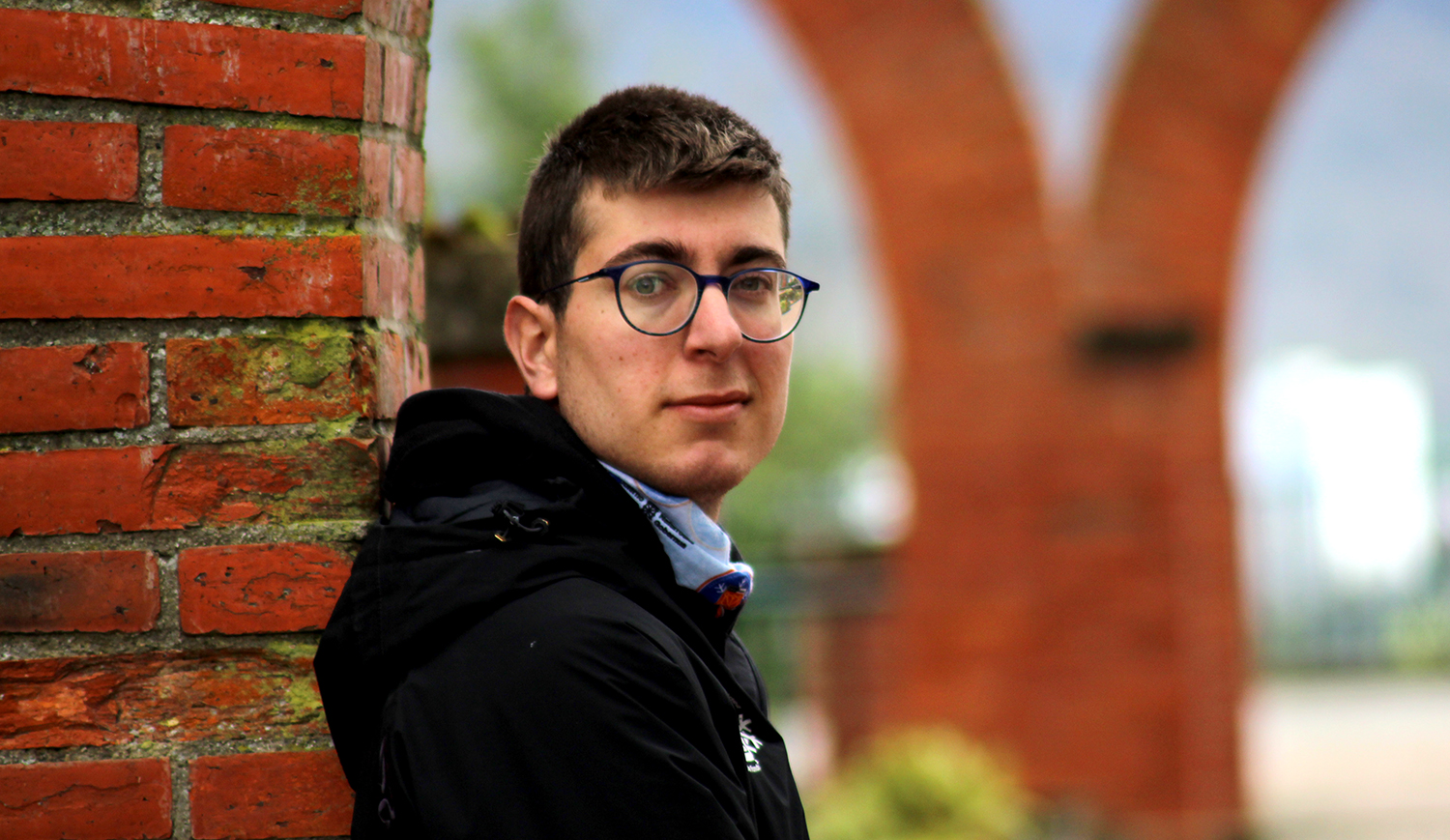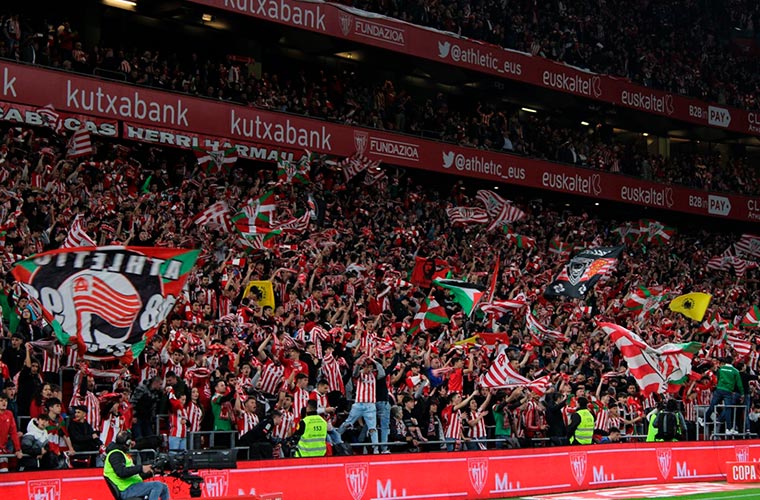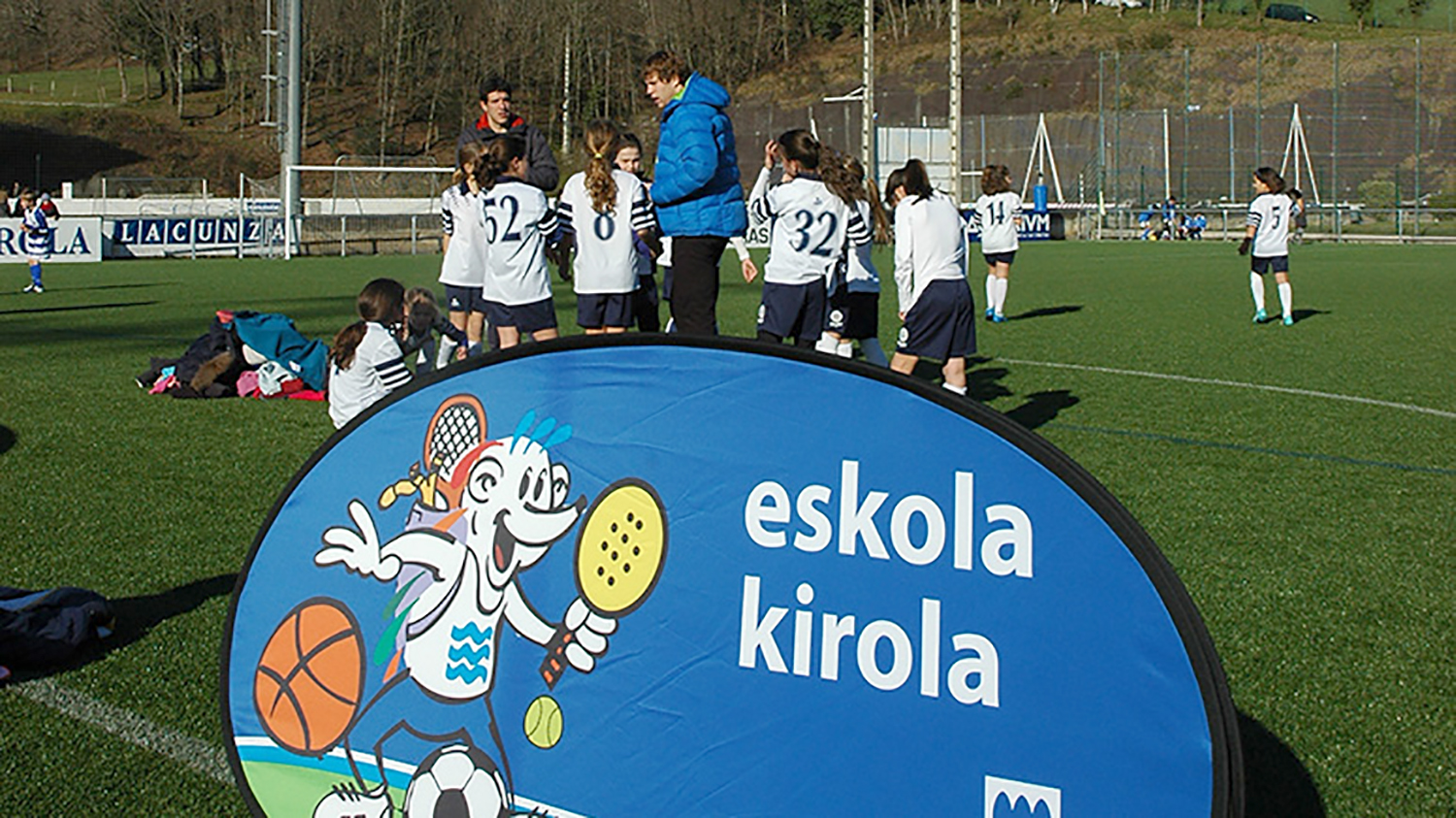Time to play small
- What impact does sport have on the environment? Is it sustainable? The question will surprise some people because apparently few things can do less harm than sport. However, like all human activity, even more so when mass has become a phenomenon, it influences the environment. It cannot be avoided. However, the impact can be assessed and measures taken to minimize it. When we talk about sustainability, our contradictions arise between the activity that we like to practice or consume and the one that suits the planet. Sport, like any cultural manifestation, serves to meet the artificial demands of the human species. It will evolve according to what we need. For whom are the installations built, the Olympic Games or the World Cup organised? The question asks us directly. If we continue to exploit resources at the present rate, we are inevitably heading for climate catastrophe, the UN Intergovernmental Panel on Climate Change (IPCC) warns. It is not the main actor, but sport also has responsibilities. Outdated stadiums that spend too much energy, ski resorts forced to take advantage of artificial snow, golf courses and green football where it does not rain enough, continuous displacements of millions of spectators, garbage, noise pollution... The sports sector is aware that it is also responsible for easing the ecological footprint. After receiving various experiences from all over the world, we contact Euskal Herria. The environmental manager of the Zegama-Aizkorri mountain marathon, Ramón Malorra, tells us about the steps taken to date and the steps to be taken. We have also gathered the concern generated by the projects of the Kurkudi and Antondegi mountains. They want to build a big sports club in Leioa and an artificial wave surf park in Donostia.
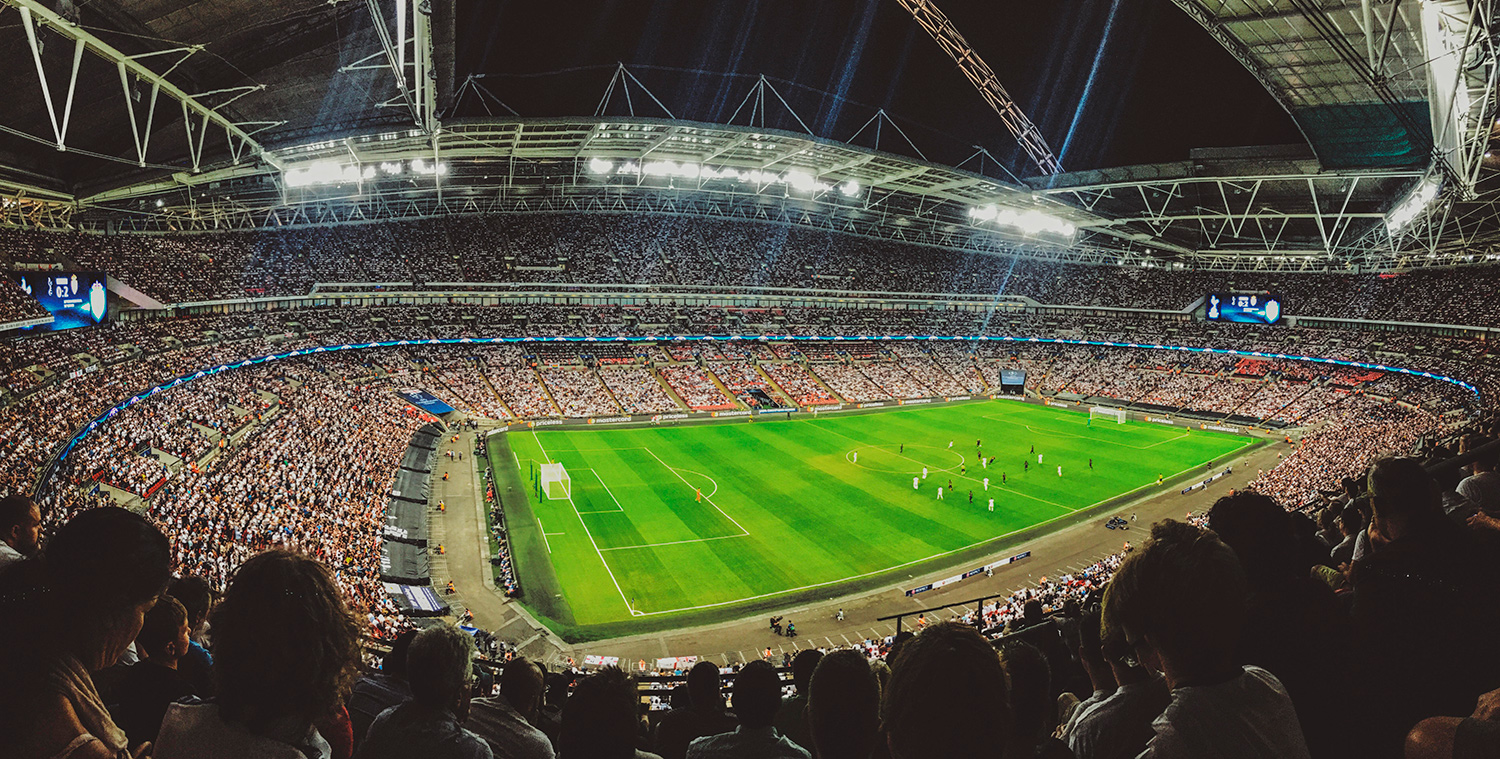
Those who want to develop have to grow. Elite sport has also endorsed this mission. More and more events, as far as possible and in more beautiful facilities, better still. But it doesn't seem that this model can be maintained for a long time, even though the funders of the show are engaged. When talking about the near future, in addition to the public quantity destined to the organization of sporting events, we must mention the emissions of greenhouse gases, the destruction and industrialization of natural spaces, or the brutal alteration of the city, all the different faces of the same phenomenon, which increasingly intensify people’s consciences. Fundamentally, because capitalism also influences sport, and that makes it an accomplice to the climate crisis and the systematic exploitation of resources, as the Catalan historian and journalist Víctor González Clota (Creixer, a perill per l per l’export that needs to be met) says. Fosbury).
Jules Boykoff, an American athlete and researcher, uses the term “party capitalism” to describe the Olympic Games. According to his words, the Games have not always had another echo or influence at present; with access to all the houses of television and in the context of the Cold War the curve has been taken: “Sport became a battlefield for global Supremacy,” he says. Juan Antonio Samaranch, president of the International Olympic Commission (CASCO VIEJO), incorporated into the same capitalist approach the path towards the model or dimension that we know today in the 1984 Los Angeles Games. Then private companies began to subsidize the appointment, while public institutions made large investments. Because the party is essential to the state, although it often does nothing but widen the hole in public accounts.
In April 2021, Nature published an important report on the impact of the Olympic Games organized in the last three decades. To carry out the evaluation, they defined the concept of "Sustainable Olympic Games": they must leave a limited ecological footprint, drive social justice and demonstrate economic efficiency. Researchers conclude that, although the opposite may be thought, since 1992 the sustainability of the Games has been reduced, both in its economic, ecological and social dimensions. This decreasing trend is mainly due to three factors: the growing size of the Summer and Winter Games and, therefore, the increased consumption of energy and resources; the low economic viability of the medium-term infrastructures, as demonstrated by the abandoned Olympic stadiums and slopes; and the strong social impact they have on the population as a result of the processes of gentrification and massification of tourism.
At first there were five cities that were candidates for the 2024 Games, but Budapest and Hamburg had forcibly left for the protests of the citizens, and Rome followed the same path because Mayor Virginia Raggi refused to protect the “Concrete Games”.
In this sense, researchers claim that it is essential to adopt measures in the organization of the Games in the short term: to reduce the size, even if the income would be reduced, to repeat the cities that will host the Games to take advantage of the installations already built and to comply with rigorous and non-negotiable sustainability commitments.
Golf, for whom?
At the gates of the Games held in Sydney in 2000, Samaranch proudly flipped the “green” flag, proclaiming that the biggest sporting entity would henceforth have sustainability as a compass. But reality has shown something else in recent years. In the same edition, the organization recognized that refrigeration systems used a large number of chemicals that damage the ozone layer. Four years later, in Athens, less than 1 per cent of the dissipated energy was renewable and some wetlands were destroyed for rowing tests. In 2012, in London, the athletes’ brilliant medals were made by the mining company Bingham Canyon, accused of polluting the rivers and water wells in the US and Mongolia.
In 2016, in Rio de Janeiro, the golf course built next to Marapendi’s natural reserve caused great controversy and protests, along with other projects that marked the environment. Then, biologist Marcello Mello collected several citizens, surfers and ecologists Golfe for quem? (Golf for whom?) One of the founders of the movement regretted that the mayor “handed over” the land to the construction companies. The golf course had a budget of 22.5 million dollars, but public institutions did not set pennies. In return, private companies built luxury apartments with their huge pools, parking lots and terraces. Apart from environmental damage, the construction of infrastructure for the rich in a very unbalanced city.

In the next edition, in Tokyo, hundreds of trees were cut off from a tropical forest in Indonesia to make graderío seats, in order not to sit public on the stands due to the pandemic. And for the Olympic Games to be held in Paris in 2024, resistance actions are being carried out in the collective garden of the municipality of Aubervilliers. To bake the cultivated lands since 1935 and prevent them from becoming Game Pools to be held in 2024, the members of the JAD Jardins à défendre (Gardens to defend) movement have occupied or blocked the machines. “This place is magical, a jeweler in the midst of an increasingly urbanized space,” the entrepreneurs say. “Following the logic of the authorities, what is left of us from ten to twenty years? We need green spaces, especially in a Paris.” Although it is not definitive, last February the victory was achieved, as the judges have decided that the project does not respect the urban plan PLU. Plaine Commune has four months to adapt and it is very likely that some of the planned facilities will not be finally built.
Like JAD, Saccage 2024 has made several protests in the French capital. “Games are an excuse, a tool for mutations in popular neighborhoods, regardless of their history, training and idiosyncrasies,” they have denounced and warned that the price per square meter in the Aubervilliers area that want to build Olympic facilities has increased considerably. It should be noted that at first there were five cities that were candidates for the 2024 Games, but that Budapest and Hamburg had been forced by the protests of the citizens, and that Rome followed the same path because Mayor Virginia Raggi refused to protect the “Concrete Games”.
“Perverse fantasy”
When we talk about the relationship between sport and climate change, we talk mainly about the influence of two major events: Olympic and World Games. In the case of games, 3.4 million tonnes of CO2 can be emitted into the atmosphere and 2.75 tonnes during the maximum FIFA competition, according to data from the University of Cardiff (Wales). By comparison, about 500,000 cars annually emit 2.3 million tonnes of CO2, equivalent to the emissions of the 2021 Tokyo Olympic Games. In addition to the mark left by the frequently constructed stages, it is necessary to take into account the displacements of athletes, spectators, etc., the accumulation of waste and the consumption of energy, food and water.
In an economy so dependent on Olympic fuels such as oil, coal and natural gas, wanting to present the Olympic Games as an example of climate neutrality, as the organizers have done on several occasions, is a “perverse fantasy”, and a demonstration of the practice of greenwashing that perpetuates the ecologically predatory model, doctors in marine sciences Marc Cerdà i Domenech, experts in climate sciences Catalpérez vs. on the website of El Critic).

China, the organiser of the 2022 Winter Olympics, announced that they would be “carbon neutral”, i.e. reduce and offset CO2 emissions associated with the sports event. They would use renewable energies, limit the number of spectators or plant thousands of trees to generate 1.1 tons of CO2. Is that enough? The three experts say that not all emissions from journeys made by air and driven by infrastructure are taken into account, and that planting trees does not guarantee long-term carbon accumulation, either because they can be burned or cut.
From one city to another, from one Olympic Game to another, the same phenomena are repeated: destruction of natural spaces, savage alteration of the city and, of course, allocating a huge amount of public money to its organization. For one reason or another, Saint-Moritz, Munich, Stockholm, Krakow, Lviv and Oslo decided to stay aside for this year’s Winter Olympics. The tendency to keep in mind is that, due to the climate or socio-economic crisis, cities are increasingly seeking to be further away from the Olympic Games.
100% artificial snow
If it is a global warming or less precipitation, some sports will undergo significant changes in a few years, if they are not going to disappear, as may be the case with some winter modalities, experts have warned. The data show this. According to the report published by the Current Issues in Tourism Journal, if gas emissions follow the current pace of the 21 cities that have received the Winter Olympics, only one of them will provide sufficient guarantees for 2080, Sapporo, Japan. Conversely, if emissions are reduced, as set out in the Paris Agreement, nine cities would be “reliable”.
Artificial snow has been used at the Winter Olympics since 1980, but in 2022, for the first time, all ski runs with white powder pumped by eleven cannons have been built. In fact, the Yanqing and Zhangjiakou mountain ranges are located in the driest area of China. It does not make much snow, at least enough to ski, but it chose or had to preside over China's candidature, because the project respects, among other things, all environmental standards.

Suisse entered one of the bank’s offices in Lausanne to denounce the sponsorship agreement signed with Tennis player Roger Federer for the Swiss company’s investment in fossil fuels. According to research published in the UK in 2021 Sweat not oil, there are about 260 global sponsorship agreements between climate crisis promoters and athletes, clubs or sports entities. The study conducted by the New Weather and the Rapid Transition Alliance refers to thirteen sports modalities (football, basketball, cycling and athletics) and dozens of companies, mainly car manufacturers, airlines and oil/gas multinationals such as Toyota, Emirates, Gazprom, Total or Ineos. / SwissInfo
Before the games started, the organization noted that it would take 186,000 cubic meters of water to make ski runs. On the contrary, several experts, including the Professor of Hydrology at the University of Strasbourg, Carmen de Jong, warned that the number of litres could be up to five times higher, as in the mountains it takes between two and three times more water than in the Alps, due to climatic conditions. All this artificial snow water must also be transported by water tanks miles away. Capital, where water resources are lower than in other areas of China, is increasingly dependent on water pumped south.
The two listed ranges are in the Songsha nature reserve. According to the hydrologist, in the excuse of the Olympic Games, 1,100 hectares (about 25% of the total area) have been removed for the construction of ski slopes, roads, heliports and parking spaces. They also scientifically transferred the farmers and their families to the big skyscrapers.
For a ski resort to be viable it must have at least 30 centimetres of snow for 100 days. It is no wonder, therefore, that most people are betting on artificial snow. Not only in the mountain ranges of China’s arid sites, but also in the peaks and ski resorts of the Alps and Pyrenees, snow will decline over the years, and most research indicates that more than half of the energy consumed by the ski resorts for training will be unviable, even with artificial snow.
According to the Pirenaico Observatory on Climate Change (OPCC), 63% of the mountain stations without artificial snow should be closed within a few years, and yet the destination of one in three is to disappear, especially those that are south or at the lowest altitude. In the Spanish State, 52% of the slopes of the six largest ski resorts (five of the Pyrenees and Sierra Nevada) are equipped with cannons to generate artificial snow, as stated in the report issued by the White Whale association.
For whom?
Critics say that artificially creating what nature doesn't offer is not a solution, because you spend a lot of water and energy. But it is essential to keep the business alive and for skiers to maintain their hobby.

Guns. More and more of the energy consumed by ski resorts is being spent on artificial snow production. / Hans. Pixabay
Like real snow, water is fundamental. To cover an average of one hectare of a ski slope with artificial snow, one million litres of water is required, if the calculations of the manufacturer Technoalpin are followed. According to industry representatives, when the snow is dismantled it can be stored in buried tanks for later reuse, while in the rest the water will be absorbed by the land and returned to the rivers, so it will not have a greater impact. On the contrary, according to the Swiss Snow and Avalanche Research Institute, the water from the cannons is dispersed at high pressure, so it is lost between 20% and 40% of that consumed by evaporation or sublimation.
Furthermore, it should be taken into account that the water pipes to the cannons must be arranged on the ground and that the excavations generate erosions that affect the course of water and the water sources of the valleys, as explained by the climatology of the University of Neuchâtel, Martine Reformada. Also, when temperatures are high, chemical additives are used that prevent snow from melting and that are harmful to flora and fauna.
Rosa María Fraguell is a professor at the University of Girona. For him, creating snow artificially is a “false solution” with a “perverse” impact on the environment. “It would be wise to play boldly and close down what does not work,” he says, listing the facilities that have been rescued by public institutions – seven of the ten alpine ski resorts are in the hands of the Generalitat – to show that they are not viable. It considers that some of them should be remodelled, diversifying tourism and turning it into mountain stations, such as those already operating some facilities.
Pyrenees, Barcelona amusement park
You will have noticed that many of the sources consulted are Catalan. And that is that there has been a lot of debate lately on the subject of the joint candidacy with Aragon to pick up the 2030 Winter Olympics. The project has failed, due to the controversy provoked and, above all, to the poor political relations between the two governments, in what situation each sport discipline should take place. The Generalitat of Catalonia has announced that it will present its own candidacy this month if it is not next, but the Spanish Olympic Board is already looking at 2034, to see if by then all the parties agree on “the collective interest”, as the president of the organization, Alejandro Blanco, wants. Because the candidature has not hit the bottom because the politicians and businessmen who have charged it have seen that it cannot be profited, let alone because the lack of snow or the environmental impacts of the installations to be built in the Pyrenees have plummeted. It's more related to the distribution of the cake, who ingests most of it.
In mid-April, when the direction of the joint application was not yet very clear, ARGIA collaborator Lukas Barandiaran interviewed Pau Lozano, member of Stop Jocs Olimpics. “The Pyrenees deserve a better future than the amusement park in Barcelona,” he said. Lozano complained that the people of the mountain range need to make investments, improve infrastructure, create a decent road and rail network, solve the housing problem, build schools and health centers or reactivate livestock. That is, to guarantee the possibility of living and working in it. On the contrary, the promoters are using the Games as “blackmail”, as if the Pyrenees were made they would meet their needs, announcing that otherwise there will be no major economic movements.

Lozano states that tourism has eaten the other sectors: “With seasonal flows in summer and winter this is accomplished, but then it is also emptied. In the Pyrenees, more than half are secondary dwellings,” he complains. It believes that the offer should be extended throughout the year and that a more sustainable model should be put in place, focusing on local businesses.
“Do you need skiing?”
Asked about the lack of snow, he replies that there is a “point of contempt or indifference regarding science and evidence”. The Stop JJOO platform recalls what was heard at a meeting held in the Parliament of Catalonia: “A member of the Junts per Catalunya said that for the snow to end we should dismiss him sooner than later. They understand the issue in economic terms. If something expects it to bring benefits, they think it’s worth doing it.” For the snow-focused business model to run out by 2040, Lozano says that the time has come to start working in other ways, “progressively and transversally”, rather than making decisions solely from the investment point of view.
Catalan mountaineer and skier Araceli Segarra has been warning about the influence of climate change for years. In Issue 39 of Fosbury magazine he is asked about the subject and why the Stop JJOO platform is supported. “Today the Pyrenees are not the perfect venue for the Winter Olympic Games. There is enough snow to ski, but not enough to guarantee decent games, and it is necessary to create it artificially. For me, if we are talking about a playful activity, the approach is absurd. If there is no snow, is it necessary to ski?” In the words of Segarra, the manufacture of snow by humans to satisfy their desire “is partly unnatural”. “Does the world end if we stop skiing? Wouldn’t it be more convenient to rethink activities?”
“Today the Pyrenees are not the perfect venue for the Winter Olympic Games. There is enough snow to ski, but not enough to guarantee decent games. Does the world end if we stop skiing?” Araceli Segarra, mountaineer and skier.
The mountaineer has been critical of the infrastructure to be built. It talks about the stands for the public and other resources that the area doesn't have, like the jump ramps. “In our country there is no tradition of jumps or enough snow. Cortina d’Ampezzo trampolines are abandoned and have more snow than here. It is an unnecessary expense that pollutes the environment and dirty the landscape.” It also talks about cross-country skiing: “The rules say you can’t do a competition above 1,800 meters and here you can’t guarantee anything below that level.”
“The same goes for climbing,” according to Segarra. “Some walls of the Alps can no longer climb due to the disappearance or loss of firmness of the glaciers that make it possible to reach the starting point of the climbing routes. The disappearance of ice in some places has led to the fall of bulky stones and the roads have become dangerous.”
Cracking glaciers
On 2 July 11 mountaineers died in the Dolomites, trapped by a lot of snow, ice and stones that collapsed part of the Marmolada glacier. The media started talking about climate change at a bolus, focusing on scientists' data. In that week, even in the mountains of over 3,300 meters, the temperature exceeded 10 degrees. The research service CNR explained that probably because of the extreme heat, a lot of ice would melt that would accumulate at the foot of the glacier breaking the block.
Although the Marmolada is the largest glacier of the Dolomites, the CNR believes it could disappear in 25-30 years, even earlier if temperatures continue to rise. In the Alps, experts have also warned of the situation of the Seracco Whymper, Gran Croux and especially Planpincieux glaciers on Mont Blanc.
In Euskal Herria we do not have glaciers, except in Gaintza, or large ski resorts, and in the boat we will soon have no event or sports facility that overflows the environment, but in our small one we have something to say.
MOUNTAIN RACING
WORKING TO FURTHER REDUCE THE IMPACT
The
Gipuzkoan Mountain Federation published an environmental report on mountain racing in 2016. A total of 56 races were held in Gipuzkoa, of which five were examined on-site, to see if they were passing through protected areas and to measure the amount of garbage remaining, soil erosion, signalling and noise pollution. Overall, the results were good, although the report mentioned that there was something to be improved in signalling – a little bit of plastic was used – in the collection of waste – the ration at the posts – or in soil erosion – in some races new roads were opened. The report noted that 10,000 runners participated in the races held in Gipuzkoa, including four of a particularly strong base: Zumaia Flysch Trail, Talaia Bidea, Ehunmilak-G2H-MariMurumendi triío and Zegama-Aizkorri.
It is precisely with the head of the Environment of the mountain marathon Zegama-Aizkorri, Ramón Malorra, that we talk about the impact of the test that brings together thousands of viewers. The first edition of the race was held in 2002, and during these first years the organization encouraged the organizers to form an Environment group with the amount of garbage left on earth. “We found a lot of kleenex, fruit skins and pipe... Yes, these are organic, but before it was not normal. When we go to the mountain we should not leave anything, nor a banana skin”. Over the years, garbage buckets have been installed in ration stations – athletes who do not use them can be expelled –, public awareness campaigns have been carried out, the whole journey has been passed before and after the race, efforts have been made to use less plastic, using reusable banderoles or advertising supports of micro-perforated canvas, etc. “This year, with the people who have come together, we feared that the impact would be greater than desired, but it has not been so much,” Malkor tells us. Fortunately it has not rained and the bark has not suffered much. “The 20 volunteers we formed the Environment team at the end of our work seemed to have no career in it. On the contrary, we left the area cleaner than the previous one, because the day before we were collecting plastics and cartridges.”
.jpg)
If there is something to highlight, we can cite the number of cleenex found near the route. “People have to get used to storing paper in a pouch after doing things and going home,” says Malkor, adding that according to the area of the tour people who accumulate in it play different. “In the surroundings of Aratz, in Aizkorri, in Urbia, in Andraitz... there we have found nothing. It meets people who are more mountainous than Sancti Espiritun and notices.” Because you can almost drive there, other viewers occupy the slopes around the old San Adrián refuge. “In general, we are becoming more conscious. Many people have hung the trash bag in the backpack...”
The organizers of the Ehunmilak, Goierriko Bi Handi and Marimurumendi races have also committed to reducing plastic linked to the Ekoehunmilak project. There have been no glasses in the rations, each runer bears his own, 1.5 liter bottles have been replaced by 5 liter bottles and food has been distributed in biodegradable and reusable containers. In addition, each corridor has been given a bag to collect the waste and deposit the next ration in the area. In addition, a call has been made to use the special bus service in order to reduce road traffic.
Bus or train
The Amezti mountain group organized by Zegama-Aizkorri is also concerned about mobility. They are aware of the need to reduce the use of private cars, and are taking steps in favour of public transport. Looking to the future, we are thinking of extending the bus service, paying a fee to car users and taking advantage of that money for environmental projects, car-sharing, or expanding the Zegama train station that Renfe closed years ago so that mountaineers can climb to Otzaurte.

Asked about the acoustic impact, Malkor tells us that only megafonies are placed in the urban area. “People make the buila and some bring the horn because it’s punctual. The animals are frightened, but in a short time everything returns to their lives.” Quoting fauna, he tells us that at that time of the year – at the end of May – birds are not nesting, and that in that sense the race does not influence. Flora also doesn't suffer much because the roads are already compacted. “The greatest erosion can occur in Urbia, because many people climb the grass, but recover about a week due to livestock activity,” explains Zegama-Aizkorri Environmental Officer. In addition, the corridors pass through existing roads and the test has partly served to recover some of them, such as the paths used by the carboneros. In a rocky area near the top, a metal step has been installed because a detachment damaged the road, but Malkor says that it may not be a consequence of the race, but it would also fall, as the land that two years ago fell by nature and that knocked down part of the journey. The organization has opened a new path to stabilization in the area.
We talked about the snowfall in Marmolada at the end of the interview. He tells us that not only in the Alps, but also in the Pyrenees, snow has fallen considerably in 30-40 years, such as the Aneto Glacier and the Tena Valley coolers. “It’s sad, we’ve done it in part.”
From the top of Aizkorri, we will now turn to two of the most humble mountains in the Basque Country, Kurkudi and Antondegi, on the occasion of the sports facilities they want to build in these natural spaces.
KURKUDIN
MACRO EFFECT OF MANY MINI-EFFECTS
In Leioa, on Mount Kurkudi, where the former convent of Dominican nuns is located, it is intended to build a large sports complex. The newspaper El Correo spoke on June 25 of the installation that would occupy 12,000 square meters in the article on the first draft submitted by the developer. On October 31, 2019, the City of Leioa, with the favorable votes of the PNV and the PSE-EE, agreed a timely modification of the General Urban Planning Plan (PGOU) that resulted in the loss of the protection of the plot, which could not be urbanized. A group of citizens opposed the decision and set up the SOS Kurkudi platform, while making representations to the project. The group has denounced that “the private mega-gym would only benefit the triple Dominlin-Atucha SL-Metropolitan”, with negative effects on landscape, environment and traffic.
Biologist Juan Ignacio Pérez Iglesias and professor of Physiology at the UPV have also publicly expressed his concern about the project. In May 2022 he published two blog articles (Kurkudi as paradigm I and II). We have translated several passages into Basque.
Kurkudi paradigma I
“In 2017 the Dominican nuns asked the City Hall to change the rating of the land descending from the south slope so that a promoter could build a large sports equipment. The area was classified as non-urbanizable soil with special protection “due to its importance and landscape or environmental interest”. I believe that, by this nature, very heavy public interest reasons should be given to accept the change of qualification and to transform it into urban land. The General Urban Management Plan itself states that the main objective of this category of soil is to protect the spaces from the deterioration and invasion of the buildings, maintaining their original condition.
If I have understood correctly, the City Hall has explained that there is already a building in that place and that, therefore, because it is a very anthropometric area, the recalification will not cause environmental problems. There is obviously an abandoned building, but authorised recalification affects a much wider area, which has been declared as unbuildable land of special protection for 20 years. We should ask ourselves why that character was then assigned. By the way, its quality and environmental value have steadily increased over the past two decades, precisely because it has remained out of human intervention.

There are those who say that it is nonsense, that for something so ininfluential we should not stop the supply of sports equipment being increased. But it's not a small thing. It involves environmental aggression in an environment that has permanently lost rural and wild areas in recent decades. It will affect not only the landscape, but also biodiversity. Nobody can say it's small. It is likely that, in any case, in thousands of small, ever-occurring environmental impacts, one more.
What is really serious is to consider the installation of large sports equipment in an area that can only enter the car itself. Increased traffic will lead to increased fossil fuel consumption and increased air pollution (greenhouse gases) and noise. It has to do, of course, with the socioeconomic profile of the users who run the promoters.
It may seem like a small thing. Because, how much can the amount of CO2 emitted by hundreds of cars going to the gym be? If Leioa's neighbors compare it to what we spend on our cars, it would have a mini effect. But many of these mini-effects produce a macro effect.”
Kurkudi paradigma II
“Message to the Mayor.
It does not provide ecological arguments to justify the change of rating. As he suggests, 20 years ago perhaps they acted with excessive environmental responsibility. I believe that when a soil has special protection, if it is to be reclassified to remove that protection, the authorities must explain how well it will be protected by which another good is sacrificed. Or submit environmental reports to justify that protection makes no sense.
“What is really serious is to consider the installation of a large sports equipment in an area that can only enter the car itself. It has to do, of course, with the socioeconomic profile of the users that the promoters think.” Juan Ignacio Pérez Iglesias, biologist.
Of the benefits of economic activity (...) It is a classic. When we want to set aside environmental problems, we talk about the jobs that will be created. Moreover, the 100 jobs that can be created would be generated in the same way as if the gym were built elsewhere. Kurkudi alone does not provide more jobs.
It says that spending 7,000 cars a day, as neighbors have pointed out, would not be so much. All right, if you say so, it will be. But it'll be thousands, that's for sure. Thousands of vehicles spending fossil fuels, thousands of vehicles emitting greenhouse gases into the atmosphere. As La Vanguardia published on May 12, in Spain we have already spent natural resources capable of creating a medium planet for its population in one year. I do not give complete credibility to the data, but it is a sign of something. You are justified by the 100 possible jobs.
The City Hall stresses that since it is a private company project, it has not been he who has chosen the place for the gym, but have asked for it. Of course not, but it is up to the city council to process the project, accepting or refusing the request for recalification.”
SURF PARK IN ANTONDEGI
Four kilometres from the sea
In
2015, the famous surfer Kelly Slater introduced the first wave created by man. Since then, artificial surf parks have begun to be built, not without controversy, on each other, and projects of this kind have also been developed in our own. In December 2020, we learned that the San Juan de Luz project was paralyzed. Wavergarden, a company headquartered in Aizarnazabal, which would build the surf park, said that the company Boardriders, the promoter of the project, had “other priorities”, as Mediabask media collected. While Jean-Fraçois Irigoyen acknowledged for the city’s disputes that there were “difficulties”, for many it became apparent that it was the result of pressure from surfers and associations who mobilized against artificial waves. The Rame Pour Ta Planète movement announced that if they move forward they would organize mobilizations.
A few months later, the municipal government of Eneko Goia announced its intention to build a surf park in San Sebastian. Location: On Mount Antondegi, in the working-class district of Martutene, just four kilometers from the sea, in one of the few undeveloped places of the city. In the context of San Juan de Luz, several surfers stated on their behalf that they would not accept such unnatural facilities. In the same terms the Surf Rider’s Foundation speaks of 50,000 international partners in San Sebastian. Fake Wave or Fake Ola opposes the infrastructure they call them, as their environmental impact is much greater than their possible contribution to surfing.

“Is it harmful to the environment? It would be more damaging to make 3,000 homes there,” stressed Deputy Mayor of San Sebastian, Nekane Arzallus (PNV), to the question asked by EH Councilors Bildu and Elkarrekin Podemos on 18 January 2021. “It will help improve the surf activity itself,” Arzallus said: “Surfers will be able to train in him and we are convinced that as a result, many young people will start this sport.” When he reproaches that his aim is to attract tourism, he replies that no, that is a proposal aimed above all at Donostiarras, bearing in mind that in the capital there are many companies working around surfing.
Boosting tourism and new jobs
The main arguments against the project have been based on the environment. Half a dozen ornithological societies and ecological groups that make up the Antondegi Berdea initiative have denounced that the surf park would destroy the habitat of many birds in danger of extinction. It is recalled that there are 117 species of birds on Mount Antondegi, of which 29 are included in the Catalogue of Threatened Species of the Basque Government. They add that in a city with natural waves there would be a waste of energy and water, as well as the transformation of a rural environment in good condition or the destruction of agricultural land for the production of local food. EH Bildu and Elkarrekin We condemn, among other things, that they want to artificialize the mountain in a city that has claimed a climate emergency. In addition, about 25 scientists, mostly biologists, have presented a writing against the project for the damage it entails for biodiversity.
As in San Sebastian, in Sabadell (Catalan Countries), several citizens have recently created the Ripoll Defense Platform against the Sabadell Surfcity park they want to build in San Sebastian. “We cannot ask people in the context of the climate emergency to save us water or consume less energy, and at the same time to say that it is a good time to make a macro-pool in the Ripoll River basin,” they said. The municipal government led by the PSC, for its part, considers that this is a “totally sustainable” project, as water will circulate in closed circuit, using solar panels and “green energy”. As is usual in these cases, the city council has indicated as a positive argument the projection of the city, the impulse to tourism and the creation of new jobs.
As sport can influence climate change, in this report we have seen how climate change can affect some sports modalities. There are eleven examples in two directions, and the sports sector is increasingly aware of the factors that threaten the planet, including the overexploitation of natural resources and the emissions of greenhouse gases, which must be fought on all fronts. Many have enthusiastically faced the challenge, but the wager must be global. Sports organizations, clubs, sponsors, amateurs, governments -- they will necessarily have to go to the brink, because growth is close to the border. This may require changes in sports habits. Are we ready?
2019an Japonia astindu zuen tifoi batek errugbi partidak bertan behera uztea eragin zuen, 2020ko suteek behartu zuten Australiako Irekia tenis txapelketa geratzea, Tokioko Joko Olinpikoetan atleta batzuek txapelketa utzi zuten sufritutako bero kolpeengatik, aurtengo neguan Qatar-en jokatuko den Munduko Futbol Txapelketako estadioak 20-24 gradutara mantentzeko airea garbitu eta hoztuko duen teknologia baliatuko dute, itsasoak urtean bizpahiru metro jaten dizkio Eskoziako Montrose golf zelaiari, adituek diote 2050erako Ingalaterrako futbol ligako lau estadiotatik batek uholdeak sufrituko dituela urtero. Klima aldaketak ekar dezakeenaren lagin bat besterik ez da.
Historia errepikatzen dela idatzi zuen Marxek, “lehenik tragedia gisa, gero fartsa moduan”. Armagintzaren eta militarismoaren inguruan errepikapen hutsa ez, espiralean goraka doan buklea ari gara bizitzen, fartsatik asko duena, eta tragedian amaitzeko gero eta aukera... [+]
Azken aldian, asteburuetan, Internet ez dabil ondo. Hasieran, zaila zen webguneei ezarritako blokeoen zergatia ulertzea; orain, badakigu Espainiako La Ligak agindu zituela, futbola modu ilegalean emititzea saihesteko. La Ligaren blokeoak euskal domeinuei eragiten dien... [+]
Orain arte desgaituak ez diren pertsonekin lehiatu da Uharteko Ipar Eski Taldeko Eneko Leyun eskiatzailea (Iruñea, 1998). 2024-2025 denboraldian, lehenengo aldiz parte hartu du Adimen Urritasuna duten Pertsonentzako Iraupeneko Eskiko Espainiako Txapelketan. Urrezko... [+]
Euskal Pilotako Nazioarteko Federazioaren eta Espainiako Federazioaren arteko gatazkak bere horretan jarraitzen duen bitartean, Jose Manuel Rodriguez Uribesek euskal selekzioaren aldeko adierazpenak egin ditu. Desadostasunak direla eta, Nazioarteko Pilota Federazioaren eta... [+]
Ertzaintzak martxoaren 13an Bilbon zauritutako bi pertsonaren testigantza jaso ditugu. Athleticen partidaren ostean larriki zauritu zituzten aita-semeak, borra-kolpeka, eta atxilo eraman zuten haietako bat. Furgonetatik ikusi zuen ertzainek nola egin zuten tiro jendearen kontra,... [+]
Eskolaz kanpoko jardueren eskaintza zabala egiten duten ikastetxeen aldean, beste askok ez du horretarako aukerarik; eta eskola bereko ikasleen artean ere, denek ezin dute ekintzetan parte hartu, baliabide ekonomikoek baldintzatuta. Esku hartzeko dei egin diete instituzioei:... [+]
Iazko udan ere Alacant aldera hurbildu ginen eguraldi hobea aurkitu nahian eta, urtero bezala, egun batez, Benidorm erraldoian sartu ginen hango giroan murgildu, zerbait hartu eta seme-alabekin izozki edo gofre bat dastatzeko asmoz.
Hiri bitxia da, denetarik aurki dezakezu... [+]
15 urteko emakume bati egin dio eraso Izarra klubean jarduten zuen pilota entrenatzaile batek.
Iñigo Cabacas Herri Harmaila taldea eta Athleticen arteko harremana nahaspilatuta dago azkenaldian. Iñigo Cabacas Herri Harmailako Iñigorekin hitz egiteko aukera izan dugu astelehenean.









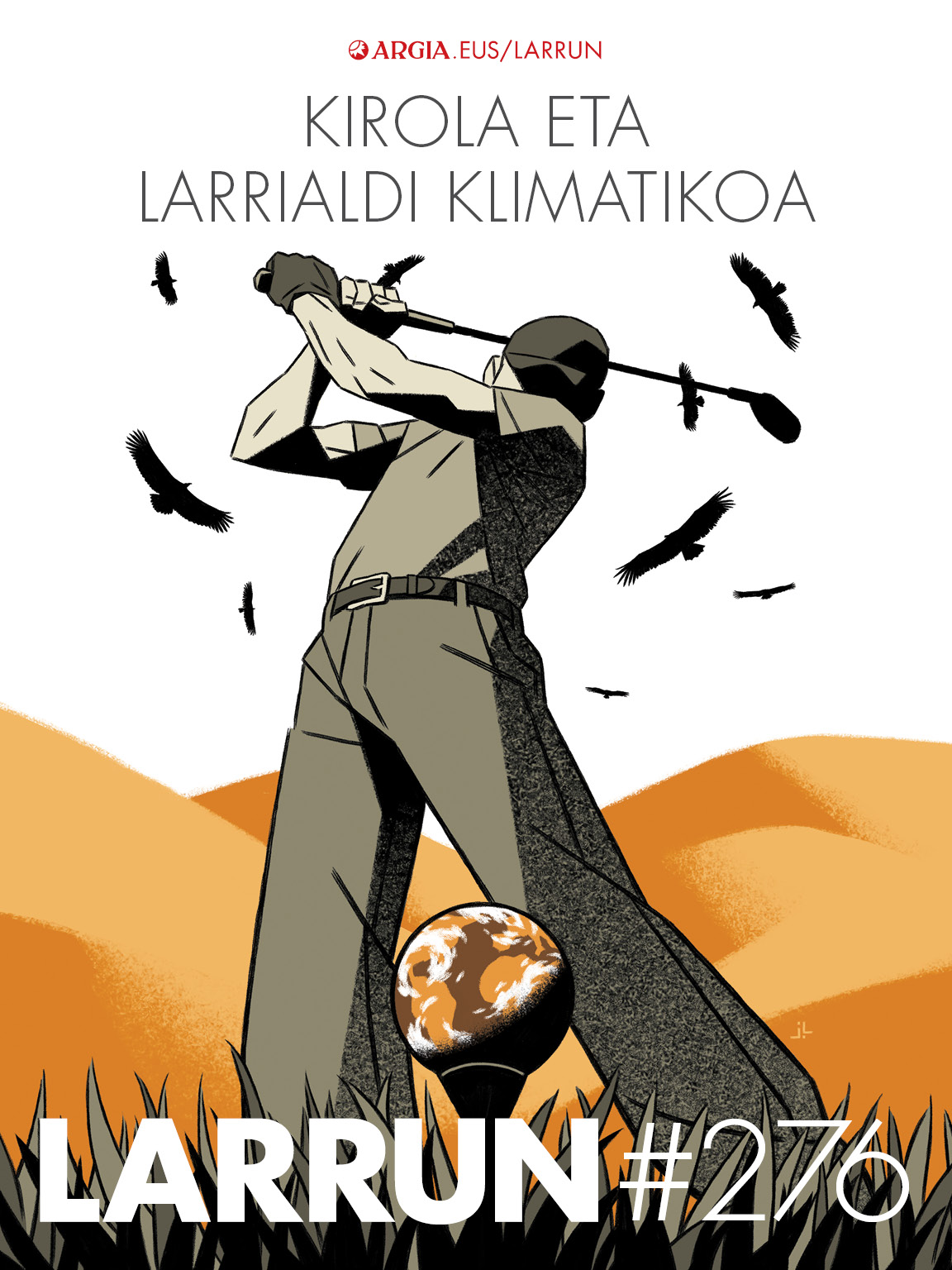


.jpg)
